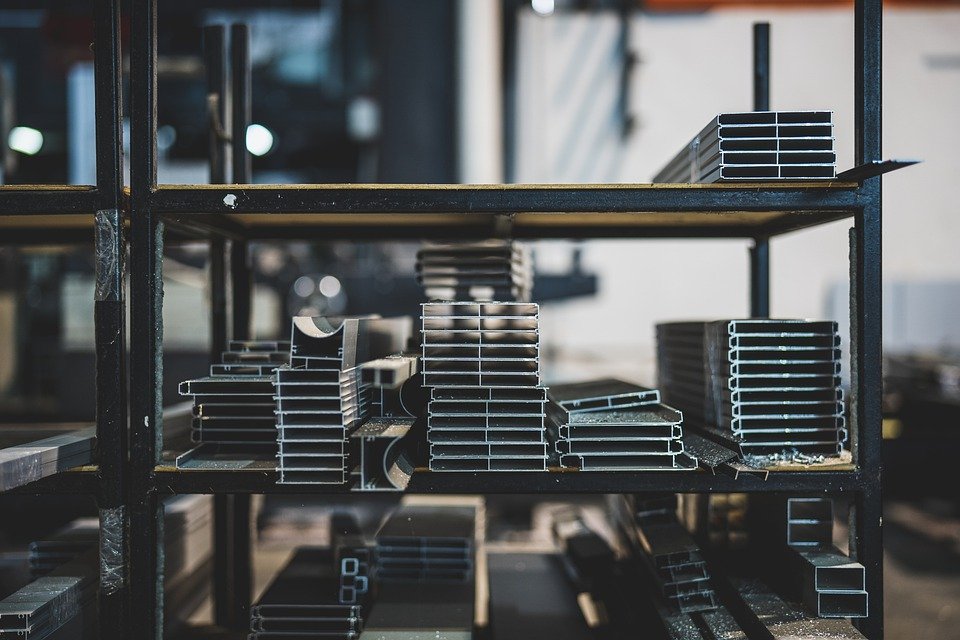So what exactly is Aluminium?
After oxygen and silicon, aluminum is the third most prevalent element on our planet, accounting for roughly 8 percent of the Earth’s crust. Aluminum is only found in chemical compounds with other elements like sulfur, silicon, and oxygen in nature. Only aluminum oxide ore can be cheaply manufactured as pure, metallic aluminum.
Because the pure form of aluminum does not exist naturally, it was virtually unknown until around 200 years ago. Electricity was initially employed to create aluminum in 1886, and it is being utilized today.
Metallic aluminum has a number of qualities that make it suitable for a variety of uses. It is non-toxic, lightweight, robust, and nonmagnetic. It reflects heat and light and transmits heat and electricity. It’s tough but malleable, and it keeps its strength in the face of intense cold without turning brittle. Aluminum’s surface oxidizes fast, forming an impenetrable corrosion barrier. Furthermore, aluminum can easily and economically be recycled into new products.
How is Aluminium exactly manufactured?
-
Bauxite Mining
In the production of aluminum, bauxite is the primary raw material. It’s a kind of clay mineral that may be found in tropical and sub-tropical regions like Australia and the West Indies. Bauxite is frequently mined merely a few meters under the surface. For every tonne of aluminum, around 4-5 tonnes of bauxite are needed.
-
Bauxite Grinding
The bauxite mineral is transported to refineries, where the clay is removed and the bauxite is ground to create a more uniform product.
-
Bauxite crushing and digesting – producing sodium aluminate
With a caustic soda or sodium hydroxide solution, the pulverized mineral is poured into enormous pressure tanks and heated with steam. The aluminum compounds in the bauxite material react with the caustic soda to form a sodium aluminate solution (also known as a slurry). The undesirable leftovers (also known as red mud) that include iron, silicon, and titanium eventually sink to the bottom of the tank and are carefully removed.
-
Settling
After that, the sodium aluminate solution is pumped into lower-pressure settling tanks. To remove the extra red muck, the solution at the top of the tanks is directed downwards via a series of filters. To eliminate any particles in the solution, the residual alumina is passed through massive “leaves” or cloth filters.
-
Precipitation
After cooling, the sodium aluminate solution is poured into massive precipitators (sometimes as tall as a 6-story building). Seed crystals of aluminum hydroxide are introduced to the solution to begin the precipitation process. Large aluminum crystals start to develop at this point.
-
Calcination
The crystals are subsequently roasted to temperatures of over 960°C in rotating kilns. This removes any remaining impurities, leaving a white powder known as alumina, or aluminum oxide. The refined alumina is transformed into aluminum through the smelting or Hall–Héroult process.
-
Smelting Process
Alumina is put into a reduction cell containing molten cryolite at 950°C. To disrupt the link between aluminum and oxygen, 400kA electrical currents are conducted through the mixture. The end output is 99.8 percent pure aluminum.
But how is this aluminium made useful?
Pure aluminium does not actually have much use and to boost its strength, it must be alloyed. The 6000 series, which is created using magnesium silicide to provide a corrosion-resistant, robust, and machinable material, is a common alloy. After that, the liquid aluminium is treated in one of three ways:
Extrusion:
This is a common technique for generating a fixed cross-sectional profile. The aluminum alloy ingot is heated to 350-500°C before being driven into the die by a hydraulic press. To relieve any stress, the material is then cooled and stretched. Many of BA Systems’ balustrade products, such as the B40 Frameless Balustrade base ICE channel, are made using this adaptable method.
Rolling:
The aluminum alloy is formed into massive rectangular beams with lengths of up to 9 meters. The thin sheets of bendable aluminum may then be rolled out. It may be rolled as thin as 0.006 mm and is used for beverage cans and foil.
Foundry Alloys:
Cold-chamber casting is one way to do this. A hydraulic piston feeds the metal into the die after it has been heated in a furnace. The aluminum is then shaped to the necessary shape by the die. This is a procedure that is utilized in a variety of sectors, including aerospace and electronics.
Why should we be recycling Aluminium?
Recycling waste aluminum uses just 5 percent of the energy required to manufacture new aluminum. Aluminum can be recycled indefinitely without losing any of its original properties. To make molten aluminum, recycled aluminum is processed, cleaned, and remelted. After that, the molten aluminum is shaped into ingots, which are subsequently rolled, cast, or extruded.
We at Dinesh Tubes make substantial use of aluminum because of its strength, adaptability, and low weight. It’s used to make little trims that go with our balustrade fastening details, handrail capping, base channel, channel trims, and other products. You can contact our team to see how they can help you customize it to meet your needs.


Recent Comments